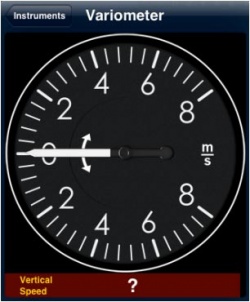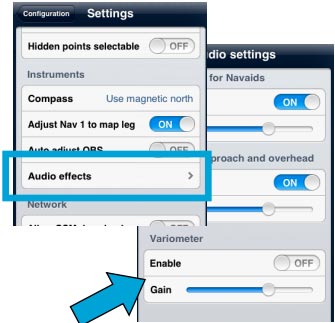| Line 3: | Line 3: | ||
<br /> | <br /> | ||
---- | ---- | ||
| − | [[File:variometer.jpg|caption|left|250px]]The variometer was coded for better performance when using '''external devices.''' | + | [[File:variometer.jpg|caption|left|250px]]The variometer was coded for a better performance when using '''external devices.''' |
| − | + | ||
However, it will display information by computing the data provided by a GPS antenna (external or internal). | However, it will display information by computing the data provided by a GPS antenna (external or internal). | ||
| − | The information will | + | The information will be shown at the bottom bar of the instrument. |
| + | |||
| Line 20: | Line 20: | ||
If no signal is received, then a question mark will show as vertical speed (like in the screenshot). | If no signal is received, then a question mark will show as vertical speed (like in the screenshot). | ||
| − | Sound alerts are supported | + | Sound alerts are supported by the variometer. |
If you wish to enable them, do this from the «Settings» panel: | If you wish to enable them, do this from the «Settings» panel: | ||
Revision as of 22:05, 4 May 2016
The variometer was coded for a better performance when using external devices.
However, it will display information by computing the data provided by a GPS antenna (external or internal).
The information will be shown at the bottom bar of the instrument.
So far, the following devices are compatible:
- AHRS g mini
- Flytec SensBox
- ASI Flynet2
If no signal is received, then a question mark will show as vertical speed (like in the screenshot).
Sound alerts are supported by the variometer. If you wish to enable them, do this from the «Settings» panel:
Back to previous page.

